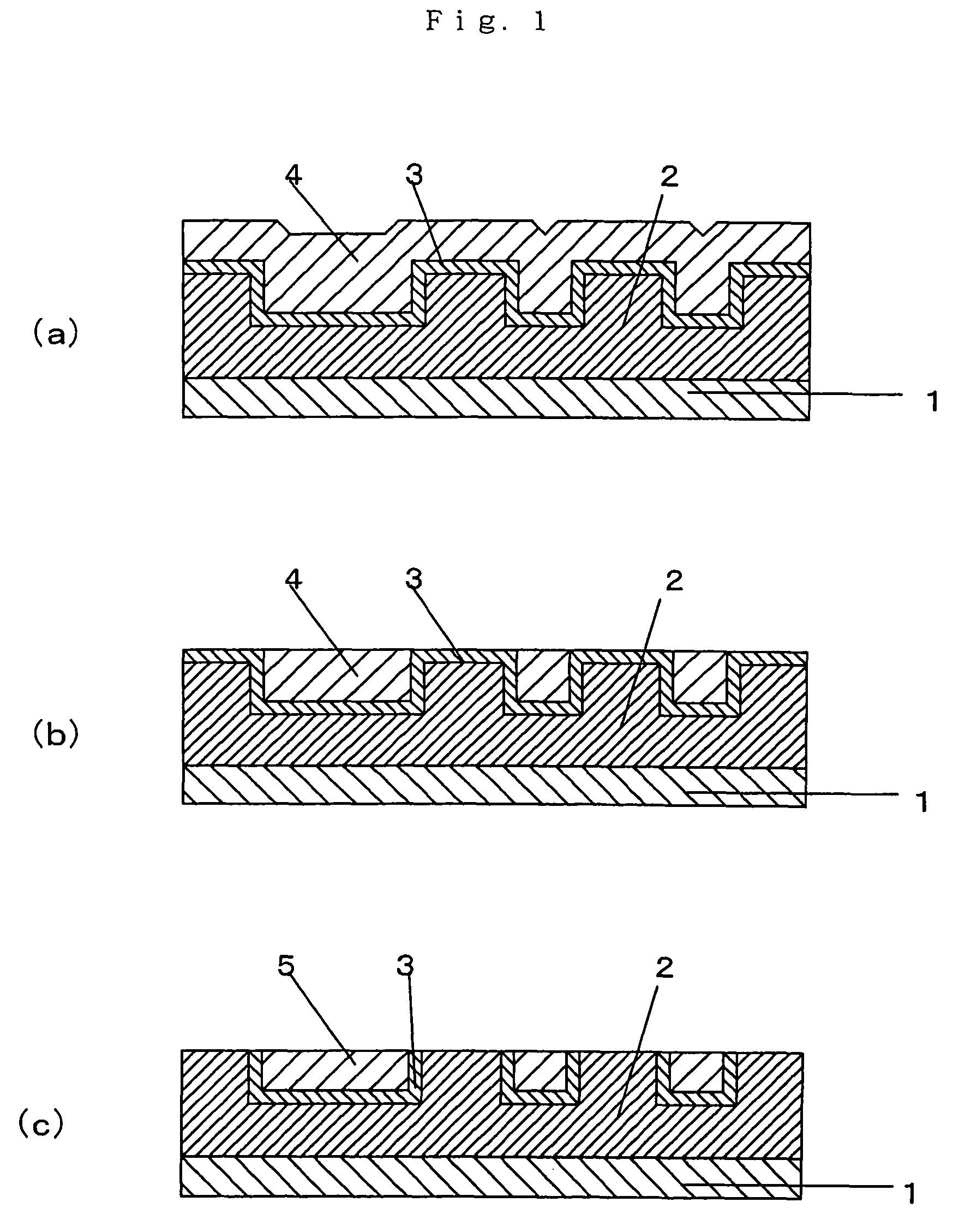Polishing compound, method for production thereof, and polishing method
a technology of polishing compound and compound, which is applied in the field of polishing compound, can solve the problems of difficult cu formation, difficulty in forming cu into, and the difference in level exceeds the depth of focus in lithography, and achieves excellent electrical characteristics, high removal rate, and high reliability
- Summary
- Abstract
- Description
- Claims
- Application Information
AI Technical Summary
Benefits of technology
Problems solved by technology
Method used
Image
Examples
Embodiment Construction
[0027]Preferred embodiments of the present invention will be described below. A polishing compound of the present invention (hereinafter referred to as “the polishing compound”) is suitable as a CMP polishing compound used for polishing a wiring metal film and a barrier film formed on a semiconductor substrate. In particular, the polishing compound is suitable for use in a process in which a substrate is subjected to CMP to form electrical connections such as embedded wirings and via holes, wherein the substrate is provided with an insulating film having gap, a barrier film composed of Ta, a tantalum alloy, or a tantalum compound such as tantalum nitride, formed on the insulating film, and a wiring metal film which fills in the gap. In a two-stage polishing method in which polishing of a wiring metal film and polishing of a barrier film are separately performed, the polishing compound is particularly suitable for use in a second polishing step carried out after the barrier film is e...
PUM
| Property | Measurement | Unit |
|---|---|---|
| mean particle diameter | aaaaa | aaaaa |
| mean particle diameter | aaaaa | aaaaa |
| dielectric constant | aaaaa | aaaaa |
Abstract
Description
Claims
Application Information
 Login to View More
Login to View More - R&D
- Intellectual Property
- Life Sciences
- Materials
- Tech Scout
- Unparalleled Data Quality
- Higher Quality Content
- 60% Fewer Hallucinations
Browse by: Latest US Patents, China's latest patents, Technical Efficacy Thesaurus, Application Domain, Technology Topic, Popular Technical Reports.
© 2025 PatSnap. All rights reserved.Legal|Privacy policy|Modern Slavery Act Transparency Statement|Sitemap|About US| Contact US: help@patsnap.com



